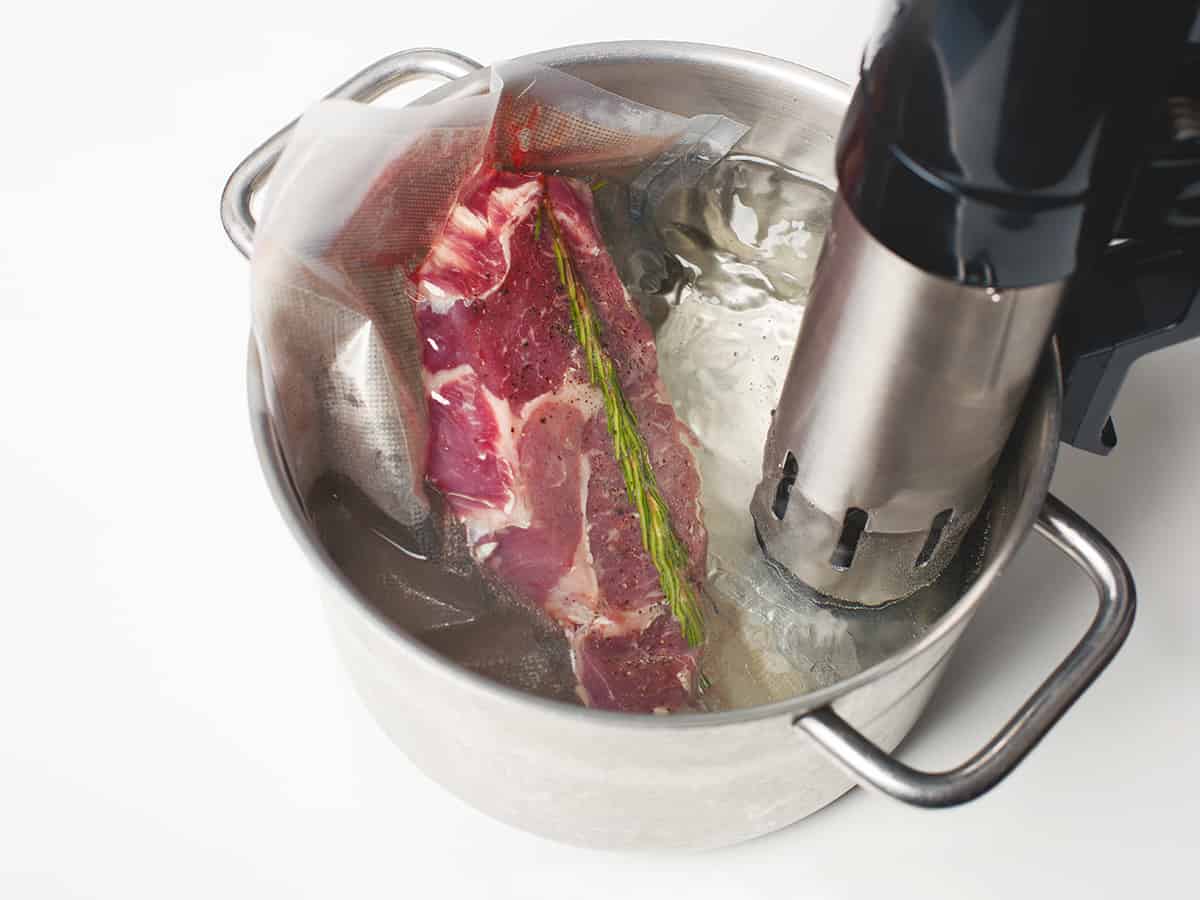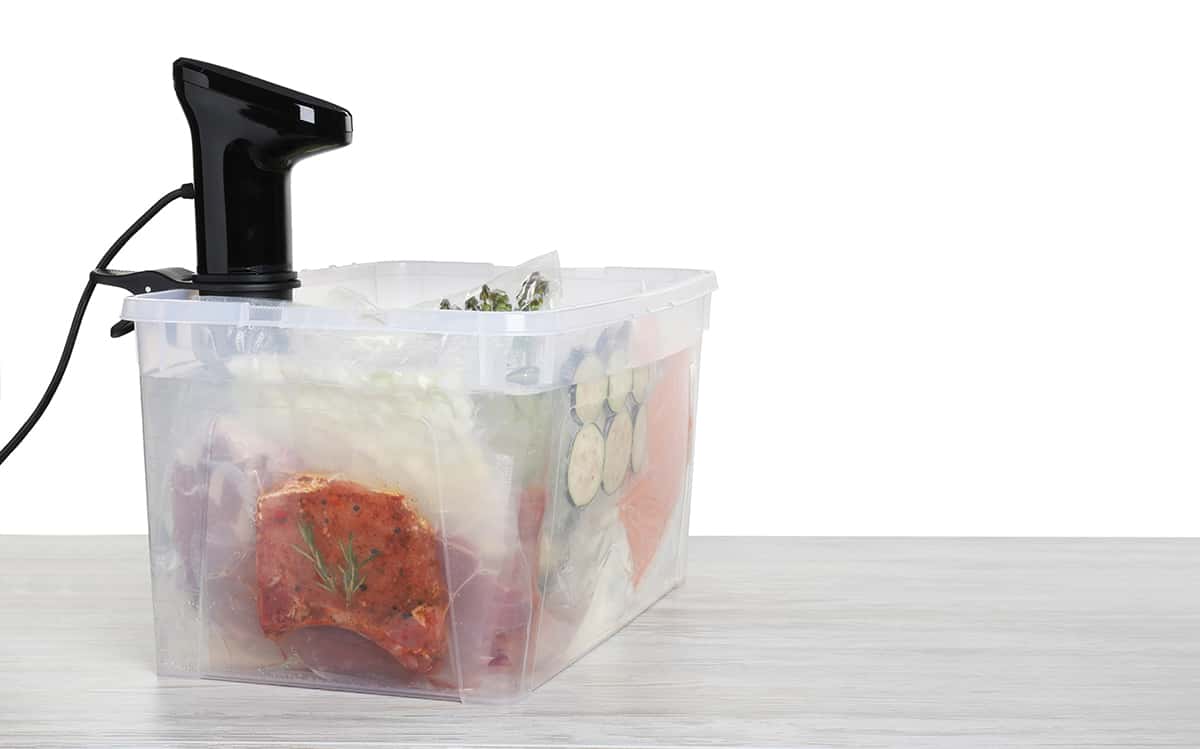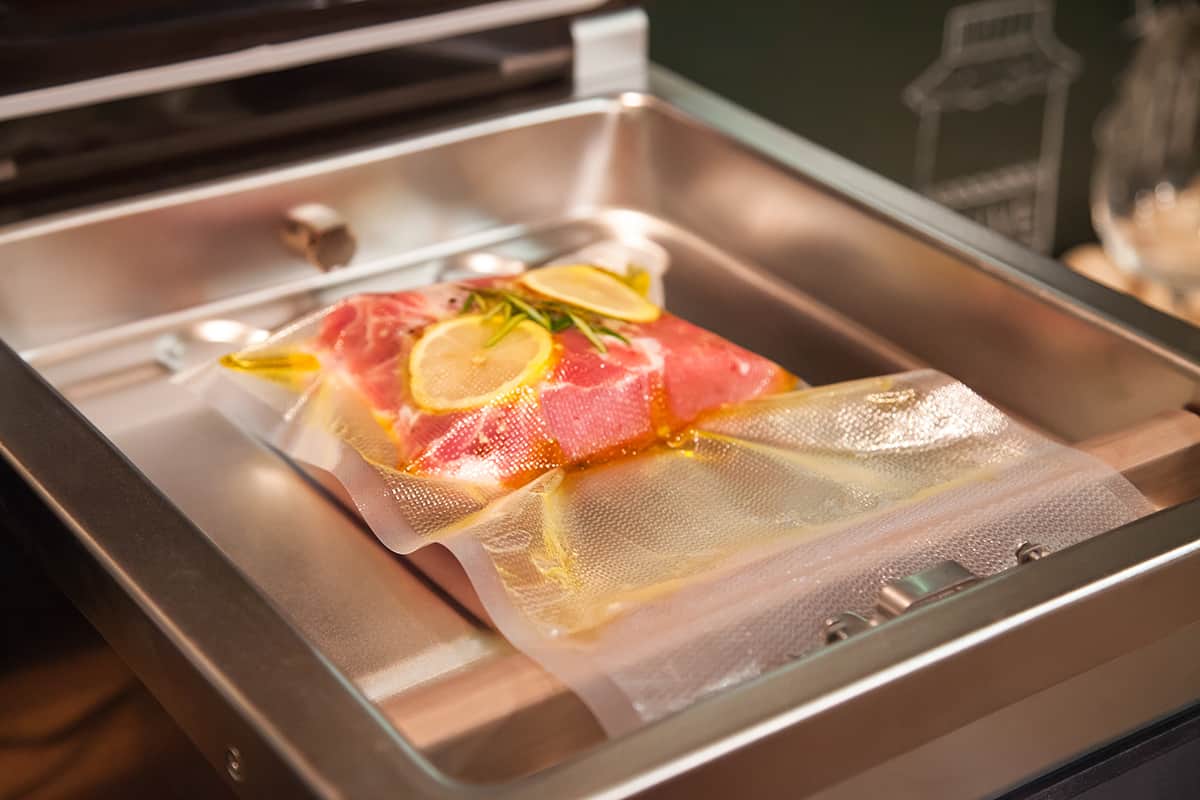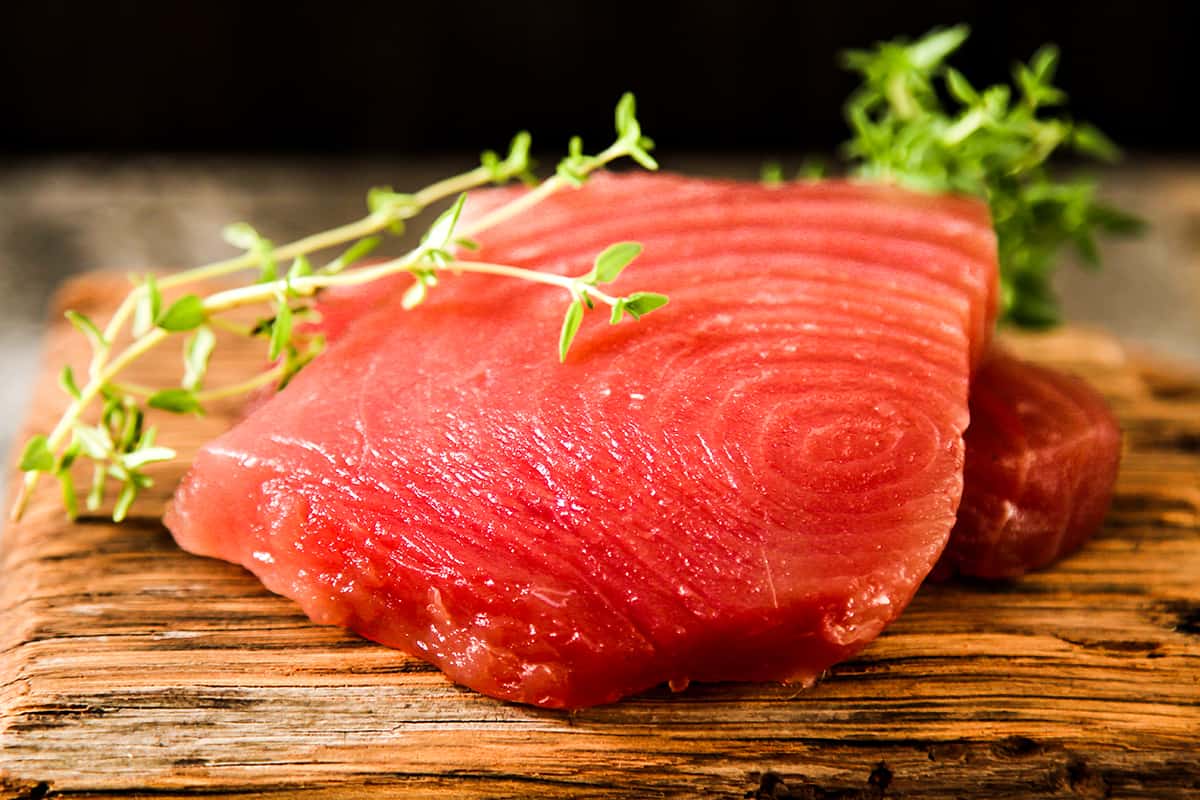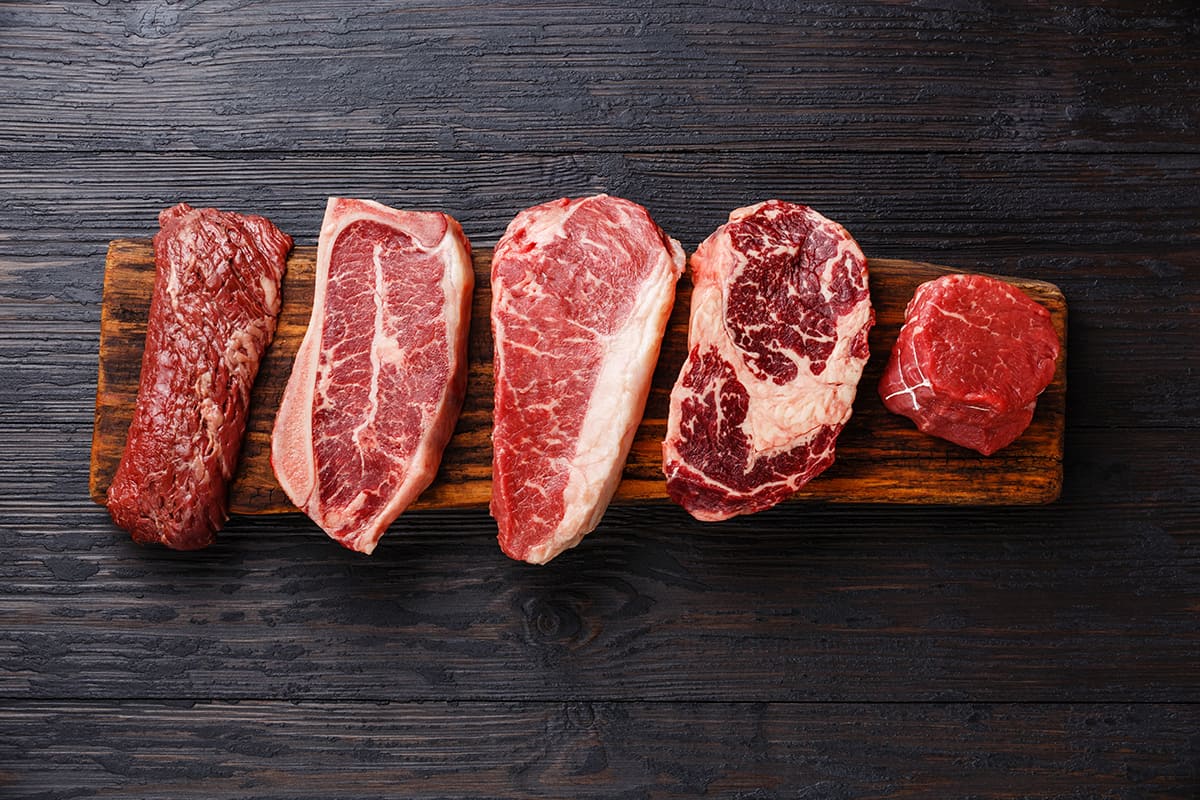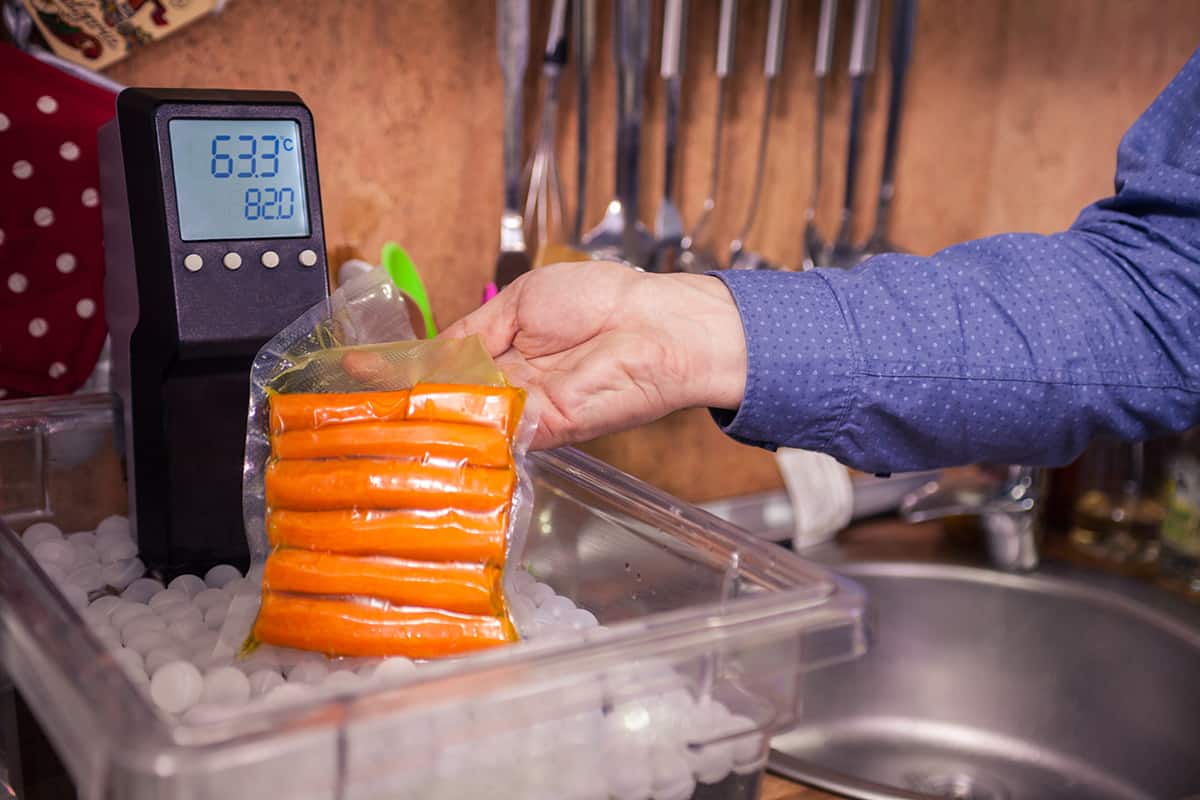Sous vide is an excellent technique for perfect flavor and textures. The method is used for cooking food in a vacuum, inside a sealed plastic packet that floats in a heated water bath. The secret to its perfect results lies in the controlled temperature and precise time. Despite the slow temperature, the margin of error lies in time calculation.
Sous vide is a perfectly safe cooking method, and the chances of overcooking are slim. Still, the perfection of the result depends on the temperature of the water circulating the sealed food.
Not all food types require the same temperature. So it is essential to choose the exact temperature to avoid overcooking. You can also overcook during the searing process if you like a crispy exterior.
This article will discuss whether it is possible to overcook food in sous vide. We will discuss how it can impact your food and suggest some tips to avoid overcooking.
Can You Overcook With Sous Vide?
We cannot eliminate the chances of overcooking, but it is unlikely to overcook with sous vide.
The sous-vide method is a slow process. It’s not like you place your stove on a burning grill, and you have to be careful for each minute on each side. Too long, the meat gets charred more than necessary, too soon, and you have a raw interior.
So you have to be very precise when it comes to other cooking methods like in the oven, grill, or stove.
We don’t have that kind of emergency to remove food from the water with sous vide.
How does Sous Vide Work?
Sous vide is when you fill-up the device with heating water over a controlled temperature. Water is circulating with a consistent temperature that does not go beyond a certain degree. Food remains in the sealed packet and does not touch the water.
So even if you leave food in there a few more minutes or forget to take it out exactly on time, it is less likely for the temperature to rise above a certain level and overcook the food.
What if You Leave Food Inside for Too Long?
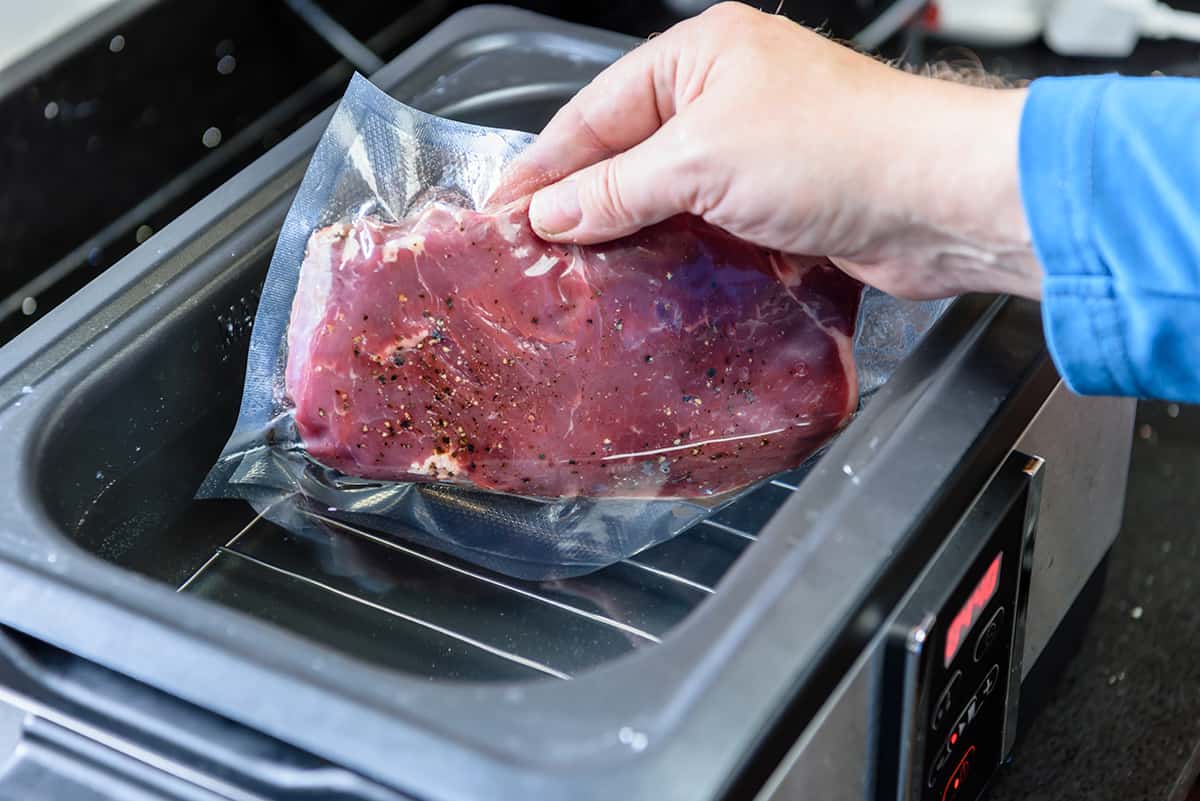
Even if you leave food inside for too long, the sous vide method won’t overcook food. Here is why,
The water is heated to a fixed temperature. A sous vide device and a temperature controller are to keep the temperature to that level. It won’t heat water more than necessary, so your food won’t get extra cooked even if you are leaving it in there for too long.
So if your food is ready and it’s not yet time to serve, you can leave the food inside until the table is ready. It will keep food warm and fresh.
How Can You Actually Overcook With Sous Vide?
As we said, if you control the temperature of the water and leave food in it for some time, then it cannot overcook the food. Still, there are instances when you can overcook with sous vide.
Wrong Temperature Setting
As we said, the base of sous vide cooking is accurate temperature. You can overcook the food if you don’t choose the right temperature according to the type of food you are cooking.
That’s a bit tricky here. Sous vide is pure science, and the perfect result depends on the accurate temperature of the water. You may choose a bit high temperature.
It is essential to understand the type of cut you are making and the accurate temperature required. You can refer to the recipe for the exact temperatures. For example, you need a higher temperature for ribeye or meat strips.
As meat portions for strips and steaks of ribeye have plenty of fat, you can cook it at a high temperature. It won’t easily overcook.
The leaner cuts like less fat content, and it is easy to overcook them. You should choose a slightly lower temperature. Again it depends on the kind of doneness you prefer.
For thicker meat cuts with fat, a medium-rare requires you can set it to 120-128 degrees for two and half hours. You can increase the temperature to a few degrees for medium-rare or medium, increasing the time.
You can have a well-done steak at 150 degrees F within 2.5-4 hours.
Tender strips like meat tenderloins have less fat and can easily become dry. Depending on how well you like your steak, you can reduce the time to three hours and leave it in a water temperature between 120-150 Degrees F.
You need to be careful of low-density meat, like burger patties, as it can also overcook easily. You can leave it at 120-145 degrees F for 2-3 hours.
Again time and temperature can change with different cuts like poultry or fish. So you have to go with the exact recipe and choose time and temperature as told in the recipe if you are not a pro.
Once you use the sous vide for some time, you can become efficient in selecting time and temperature on your own, but for a start, you can consult the booklet that comes with your sous vide device or take help from an online resource.
There are plenty of resources like Anova resources for sous vide. It comes with a complete guide on time and temperature for different types of protein.
Sous Vide Frozen Food
Another mismanagement of time can happen if you are cooking frozen food. You need to add some extra time to defrost the food with frozen food. You can set 50% of added time for frozen food.
Searing Food After Sous Vide
Another way you can overcook sous vide food is if you are searing it afterward. Due to the vacuum, cooking food does not get charred. There is no crispy exterior as in frying or baking. Some of us tried to give a little searing post-cooking.
While it certainly gives a crisp exterior, it can easily overcook your steak or roast. Food is completely done in sous vide, and more temperature during searing can overcook it easily.
Final Words
Although you cannot overcook with sous vide, there are still some things that you should be careful about. A wrong setting of water temperature can overcook the food.
Also, not all food types are the same. So it is essential to do your homework and choose the precise water temperature if you want the perfect result each time.
